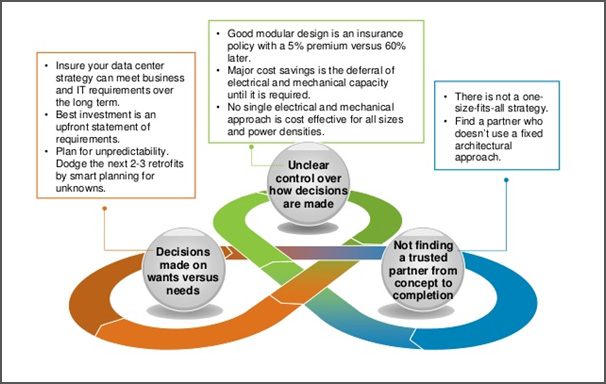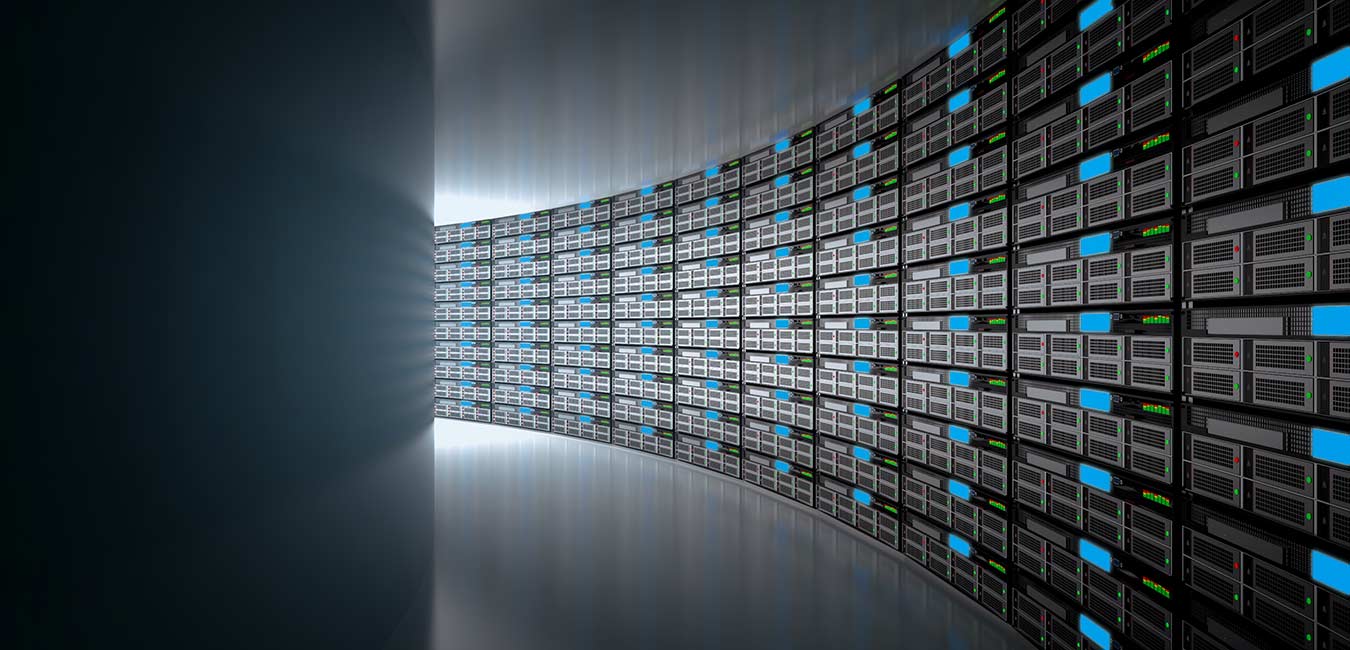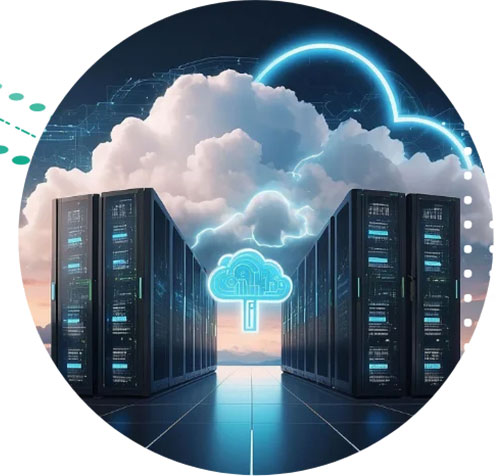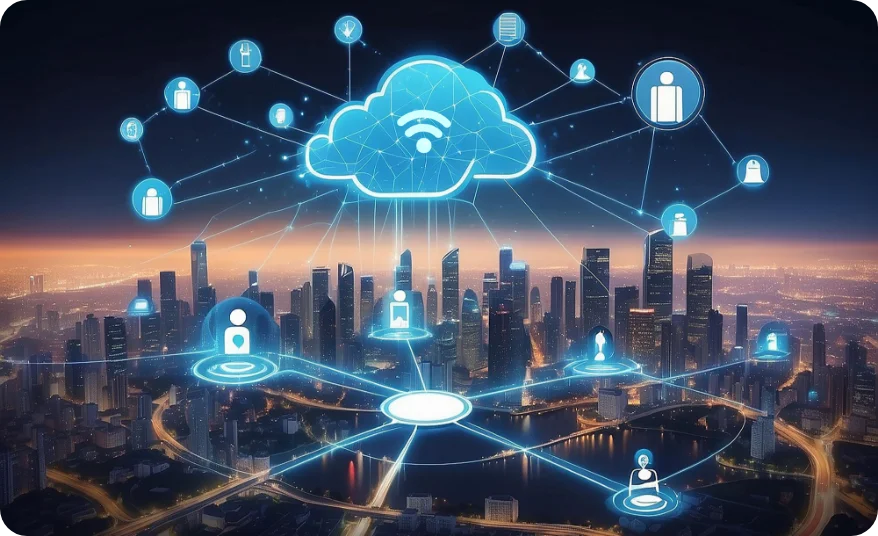Simplify Your Network Transformation
Simplify your Network Transformation with Sify
The business world is witnessing an unprecedented transformation as organizations across verticals are passionate to embrace new technologies. Cloud, Analytics, Automation, Internet of Things, Artificial Intelligence, and Machine Learning are some major forces that are enabling enterprises to deliver a top-tier experience to customers. As organizations nowadays are highly reliant on these emerging technologies to achieve organizational excellence, one must acknowledge that all cutting-edge technologies require an intelligent and robust network. There are numerous factors that are fundamentally redefining the ways new-age networks work and function. The emergence of new global trends and multiple new technology trends have compelled organizations to demand more from networks. This blog discusses:
- Major global and technology trends that have paved the way for network transformation.
- New-age network architecture and design for Intelligent Network services
- How Sify can help you in your network transformation journey with a wide range of Intelligent Network Services.
Global Business Trends leading to increased demands from Networks
- Hyperconnected Enterprises:
In the digital age, global organizations rely on a multitude of connections for geographically distributed people, processes, and devices. Also, the increasing adoption of hybrid and multi-cloud has compelled global enterprises to become hyperconnected. For such hyperconnected enterprises, a scalable network is quite critical to deliver top-tier services to customers across the globe through digital technologies. - Digital Business Transformation:
In line with their digital ambition, organizations worldwide are looking to leverage Cloud-native technologies such as analytics, mobility, IoT, AI, and ML to modernize and develop new processes, services, and models for generating new revenue streams. An intelligent and adaptable network can quickly adjust according to evolving requirements, facilitating seamless transformation. - Automation and Robotics:
Several enterprises rely on Automation, Robotics, and Robotic Process Automation to improve operational efficiency, quality of services, and customer satisfaction score. The use of Automation and Robotics in the coming years will continue to surge as companies look to improve quality, workforce productivity, customer satisfaction, and more. This is even more relevant than ever in the pandemic-stricken world. As automation of processes is time-sensitive and mission-critical, enterprises will need round-the-clock availability and reliability from their distributed networks as even a minor lapse in network availability or reliability can potentially hamper the process flow and affect overall efficiencies and customer satisfaction.
Technology Trends powering fundamental Network Transformation
- Applications being modularized and distributed across Clouds: Recently, hybrid Cloud and microservices have gained massive prominence across business verticals. The majority of software applications are being modularized and distributed across public Clouds and network edge. To support applications across such a distributed landscape, the network needs to transform fundamentally. There is a need for Networks to be agile, seamless, secure, and responsive to dynamic application landscapes.
- IoT and M2M integration with mainstream Networks: The exponential rise in the number of IoT devices worldwide highlights the need for smart Machine-to-Machine communication. This means the network must capably provide connectivity to all the IoT devices and integrate them smartly with mainstream networks.
- Pervasive Mobility: Owing to the anywhere data center and anywhere user access, there is a need for a robust network to allow users to access applications on Cloud. As anticipated, mobile users will continue to grow in the years to come and they would need round-the-clock high-performance connectivity to access applications on Cloud from private devices over Wi-Fi or 4G networks. Therefore, to cater to this rapidly growing mobile population, it becomes imperative to strengthen the Edge connectivity to these vast diverse, and distributed user base. Edge Transformation is predicted to be the next big wave in the Networking space. As per Gartner – by 2025, 75% of enterprise-generated data in industrial settings will be created and processed at the edge.
- Immersive video experience: User experience has taken the center stage in the digital era, therefore enterprises are keen to make the video experience more immersive. They have started leveraging the power of digital media technologies, Virtual Reality, Augmented Reality, and immersive 3D environments to ensure a top-tier experience. This is placing greater demands on enterprise networks as video experience is totally dependent on low-latency and high availability infrastructure. Moreover, enterprises also want their networks to provide end-to-end bandwidth and dynamic performance controls to further make the experience more enriching.
New-age network architecture and design for Intelligent Network Services
In response to emerging trends and the fast-changing IT landscape, organizations need to rethink network architecture and design strategies to drive digital transformation. It becomes quite critical to align network capabilities in accordance with the changing business requirements and modern topologies. In this light, some of the expectations from Intelligent Network Services are the following:
- Support the fast-changing set of users, applications, devices, and services and unify them intelligently for top-tier user and application experience
- Seamlessly connect between distributed IT assets and applications in a DC and hybrid multi-cloud environment
- Leverage Software and other functionalities to control, rather than physical access and distributed policy control
- Leverage the cutting-edge technologies and algorithms to collect, assimilate, analyze, and visualize networking information in real time for better visibility and control
To achieve the above objectives, there are 3 broad aspects that the IT leaders must follow while designing and architecting the new-age network architecture.
Networking architecture for anywhere Data Center:
Organizations nowadays have their applications and data spread across Data Centers, Clouds, and Edge environments in diverse geographical regions. To meet the requirements of this diverse hybrid ICT landscape, organizations need new networking architecture that is ready for Cloud, meets application connectivity demands, and ensures technology and operational consistency across locations. Therefore, the new-age network must facilitate faster and safer modes of data transfer across Data Centers, Cloud, and Edge devices. This highlights the significance of Cloud-ready Networks with DC Interconnects and Cloud Connect capabilities.
Being a trusted ICT company, Sify ensures a Cloud-ready Network, comprising of Data Center Interconnects, Hyperscale Cloud Connects, and Internet Exchanges for carrier neutrality. Our Cloud-ready Network provides you with deterministic and secure connectivity to move applications, middleware, and database workloads between private infrastructure and Cloud for improved application performance.
Hybrid WAN and Application performance-focused Network Architecture:
In the age of hybrid and multi-cloud, it becomes critical for organizations to have a well-thought-out network strategy for distributed workloads, data footprints, applications, services, and microservices. With the rise in multi-cloud adoption, the legacy hub-and-spoke WAN architecture can hold organizations back. The shift from Data Centers towards Cloud has resulted in the more prevalent use of the SLA-defined Internet (in addition to MPLS) as a reliable and pervasive way to establish robust connectivity. Hence, modern-day businesses need a hybrid WAN strategy – the use of internet for business applications along with MPLS. This means the new-age network must enable the hybrid WAN and be smart enough to adapt to the changing application performance demands in a hybrid or multi-cloud environment, ensuring better performance.
Herein, Software Defined Networking can enable fundamental network transformation. SDN can help accomplish the goals of network transformation – agility, flexibility, and application centricity – by intelligently controlling the network architecture using software applications.
- Software Defined Networking facilitates flexible network architectures, which can utilize multiple network connectivity options (MPLS/ILL/BB/4G-LTE/Internet) which help leverage a Hybrid WAN strategy for the evolving DC and Cloud landscape
- SD-WAN ensures application awareness and complete visibility of site-wise utilization of various applications, which paves way for better performance, availability, and security.
- SD-WAN leverages the power of Cloud-based monitoring and management platform for centralized, real-time visibility of all resources.
- SD-WAN solutions can be easily integrated with legacy network architectures, which enable phase-wise migration of sites.
Sify’s SD-WAN platform is hosted in Secure Cloud, and our experts perform all the monitoring and management functions from the state-of-the-art NOC. This helps you maintain distance with different configuration tasks at branch sites and focus on your core business. Our SD-WAN solutions – coupled with end-to-end Managed Network Services – drive efficiencies, reduce cost, and optimize multi-cloud connectivity.
Centralized visibility, control, and insights of the Network:
Organizations need complete visibility and control over network connectivity to make the most of their Cloud investment. They would also want their network to provide intelligent insights that enable data-driven decision-making. An intelligent network can help businesses with automated and effortless orchestration of network resources. However, enabling a network with comprehensive intelligence is not as simple as it seems, because it requires a well-established network management practice with well-integrated toolsets.
Currently, only a few network service providers, such as Sify Technologies, have the assets, capabilities, and expertise to deliver Intelligent Network Services. We ensure centralized management of the network, powered with the capacity of SDN, to bring in the highest level of visibility and control of the entire network landscape. We offer a comprehensive range of Network Management Services on flexible outcome-based models – shared NOC Services, Hybrid NOC Services, and Dedicated NOC Services – from our state-of-the-art Network Operating Center.
Sify’s network experts ensure 24×7 proactive monitoring and management of network connectivity of devices such as routers, switches, and firewalls, and provide comprehensive reporting of various network parameters such as availability, performance, and security.
Conclusion
The emerging business and technology trends have compelled enterprises to empower their network with inherent intelligence built into them. This needs fundamental network transformation and re-architecting from the ground up, to suit evolving DC and Cloud landscape, distributed/mission-critical applications, and network orchestration needs.
Being a strategic network transformation partner, Sify helps you transform your network into a robust and intelligent asset. We provide Intelligent Network Services which include Cloud-ready Networks, Software-defined WAN, and centralized Network Managed Services, to accelerate your digital transformation with the robust foundation of a fast, secure, and future-ready network.
M2M is shifting to M2M
The final eulogy to ‘Man is the Master of the Machine’ has been written.
In the movie Terminator 3, the sequel delves into the takeover of earth by machines, until the very end, when the machine itself has a change of heart. However ominous those signs are, what is undeniable is that the age of machines is upon us.
From mere input mongers to making sense of the mountain of data, cataloguing them, analysing them and delivering a seemingly analogues interpretation of it, machines have become the new indispensable smartphone for today’s Enterprise. Within this paradigm, the original input feeder, the man, is now relegated to building strategies on top of the results that the machine has spewed to him. The shift from Man to Machines, to Machines to Machines is now here to stay.
The component that has built itself into an indispensable position in this entire equation is that of the Data Center. Not the legacy coLocation versions but the new age, intelligent data player that offers compute, store, analyze, cohabits the Cloud and Applications within itself. One that is intelligent and elastic enough to accommodate the growing data demands of tech-dictated enterprises.
The Data Center, referred rather insipidly to its very reason of its existence, is now a chameleon in the entire IT structure. In some cases, it is the eventual residency point for the data. In others, it is starting point of information that has been decoded and awaits a decision. And in between, is the binding agent in an ever-spawning network.
Come to think of it. What if it was removed from the equation? Or perhaps, more benevolently, scaled down to just a rudimentary Data Center. Before we answer that question, here’s something of an analogy.
Imagine if all your data was not retrievable one not-so-fine morning. Will we see a repeat of the dark ages? Perhaps so. It is therefore not a far-fetched misnomer when Data is referred to as the new economy.
So, what size of data is the world coming to? Here’s a curtain raiser.
Shantanu Gupta, director of Connected Intelligent Solutions at Intel, introduces the next-generation prefixes for going beyond the yottabyte; brontobyte and gegobyte.
A brontobyte, which isn’t an official SI prefix, but is apparently recognized by some people in the measurement community, is a 1 followed by 27 zeros. Gupta uses it to describe the type of sensor data we’ll get from the internet of things. From there, a gegobyte (10 to the power of 30) is just a short distance away.
Now imagine the computational strength required to make sense of this volume. Companies will hence need to have a future-proof strategy in place for collecting, organizing, cleansing, storing, and securing data – and for applying analytics to derive real-time insights to transform their businesses.
A story in Information Management highlights “Big Data Analytics: The Currency of the 21st Century Enterprise.” Quite an interesting read. The gist of the argument: Personal data has an economic value that can be bought, sold, and traded.
Emerging technologies are driving transformation within organizations. The year 2019 will see Artificial Intelligence (AI) and Machine Learning (ML) driving change in enterprises. We already see numerous use cases of these emerging technologies in industries such as BFSI, healthcare, telecom, manufacturing, and home automation. These technologies can cull data and get real-time insights about the business and offer timely solutions or corrective action, often without human intervention. AI-backed automation and predictive analytics will help predict challenges that may arise; it will streamline operations, save costs, enhance customer experience, and perform repetitive tasks. While the adoption of ML technologies will lead to exponential growth of enterprise data, the accuracy of outputs is a factor of the sanctity of the input.
That calls for a trustworthy Data Center partner, not only to store the data but also to analyze and manage it. The ideal Data Center partner should do both — cater to current requirements and also adapt to the changing IT landscape.
According to a Frost & Sullivan report, from an APAC standpoint, it said, the Data Center services market will grow at a compound annual growth rate (CAGR) of 14.7% from 2015-2022 to reach US$31.95 billion at the end of 2022. Specifically, the India Data Center market is expected to reach values of approximately $4 billion by 2024, growing at CAGR of around 9% during 2018-2024. Major cities such as Mumbai, Bangalore, and Hyderabad are witnessing high investments of local and international operators in the Indian market. The increasing construction of hyperscale facilities with the power capacity of over 50 MW will fuel the need for innovative infrastructure in the market over the next few years.
A recent study of 500 International Data Centers threw up key insights into what constitutes a well thought out Data Center strategy and one that ticks the right boxes for an Enterprises when selecting a DC partner.

It is therefore evident that the Data Center should be built to solve a business problem – both current and future, should have the flexibility to adapt to changing demands and should be agile enough to accommodate newer dynamics of the business. The paradox in the situation is that as the Data Center grows, the density of the data within it will also expand; all this on hardware that will significantly shrink. Computing power therefore becomes the differentiator and will help negate any push backs that volume will bring up.
It is not lost on DC players that Security is the other differentiator. If this data falls into the wrong hands, it could create havoc, resulting in million dollar loses for corporations. It would impact the credibility of trustworthy institutions, entrusted with sensitive consumer data. Here are two recent incidents.
- In January 2019, the HIV-positive status of 14,200 people in Singapore was leaked online. Details included identification numbers, contact details, and addresses were available in the public domain.
- In December 2018, a cyber-attack exposed the records of 500 million guests of the hotel giant Marriott International. The attack occurred over a period of four years and was traced back to a Chinese spy agency.
The emphasis on security and compliance is even stronger now with the European Union’s General Data Protection Regulation (GDPR). In fact, GDPR is hailed as one of the most critical pivots in data privacy rules in the past two decades. It is going to fundamentally change how data is handled, stored, and processed.
Given the geographic-agnostic nature of such attacks, it is not lost on Indian IT companies to be wary of an impending attack. The Government-steered Personal Data Protection Bill mandates stringent rules for security, consent of customers, data privacy and data localization. Indian businesses will need to realign their Data Center strategies to comply with this Bill, which could eventually become law. This law will push business leaders to rethink identity and access security, encryption, data systems and application security, cloud security, and DDoS, among other things. And that’s where machine to machine will score higher. Little wonder that CIOs are in favour of the benefits of automating the whole of atleast a majority of the work chain.
Machine to machine allows for a predictable, systemic patterns, allowing for hyperscale computing, deep-dive analytics, trend spotting, vulnerability recognition and elimination, risk mitigation, even alternate computing, without the vulnerabilities of man to machine directions. The choice therefore in front of the CIO are to go with a service provider who is an SI or an IT architect who has provisioned the entire landscape and hence can implement machine-derived predictable automated results.
Does this mean it is the end of human thinking? Quite to the contrary, it started because of human thinking.
Sify has always taken pride in supporting technology advancements since the launch of its first Enterprise Data Center in 2001 and we invite you to download a copy of Gartner’s Market Guide that tracks the evolution of Data Center Services Market in India and highlights the wider choice of providers, hosting locations and services.



























































